

c328 innovations book final 2 web. PZ's Thinking Routines Toolbox. Welcome to Project Zero’s Thinking Routines Toolbox.
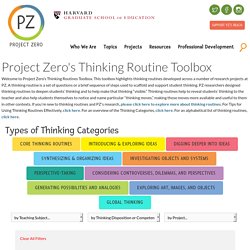
This toolbox highlights Thinking Routines developed across a number of research projects at PZ. A thinking routine is a set of questions or a brief sequence of steps used to scaffold and support student thinking. If you're new to thinking routines and PZ's research, please click here to explore more about thinking routines. A vast array of PZ's work has explored the development of thinking, the concept of thinking dispositions, and the many ways routines can be used to support student learning and thinking across age groups, disciplines, ideals, competencies, and populations. Helping learners manage their digital footprint. The emergence of the internet has created new and exciting opportunities for young people; they are deeply involved in social media creating content, expressing themselves and building communities like never before.
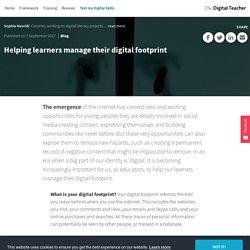
But these very opportunities can also expose them to serious new hazards, such as creating a permanent record of negative content that might be impossible to remove. In an era when a big part of our identity is ‘digital’, it is becoming increasingly important for us, as educators, to help our learners manage their digital footprint. What is your digital footprint? To what extent does Bloom’s taxonomy actually apply to foreign language teaching and learning? Bloom’s taxonomy of higher order thinking skills has acquired a mythological status, amongst educators.

It is one of those reference frameworks that teachers adhere to with some sort of blind allegiance and which, in 25 years of teaching, I have never heard anyone question or criticize. Yet, it is far from perfect and, as I intend to argue in this article, there are serious issues undermining its validity, both with its theoretical premises and its practical implementation in MFL curriculum planning and lesson evaluation in school settings. Why should we be ‘wary’ of the Bloom taxonomy, as the ‘alarmist’ title of this article implies? 20 Ways To Bring The Joy Back To Your Classroom. By Terry Heick Remote teaching and learning have gotten me thinking recently about less about what we teach or even why (two things I tend to think about the most), and more about how we teach (also a critical concept)–which has brought me to the idea of joy.
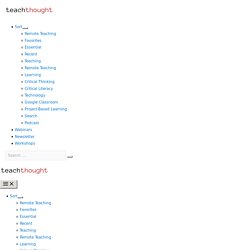
In a 2014 post, Where Has The Joy Of Learning Gone, neurologist Judy Willis explained, “The truth is that when the joy and comfort are scrubbed from the classroom and replaced with homogeneity and when spontaneity is replaced with conformity, students’ brains are distanced from effective information processing and long-term memory storage.” Moodle. On 21 January, I attended the launch webinar of DEFI (the Digital Education Futures Initiative), an initiative of the University of Cambridge, which seeks to work ‘with partners in industry, policy and practice to explore the field of possibilities that digital technology opens up for education’.

The opening keynote speaker was Andrea Schleicher, head of education at the OECD. The OECD’s vision of the future of education is outlined in Schleicher’s book, ‘World Class: How to Build a 21st-Century School System’, freely available from the OECD, but his presentation for DEFI offers a relatively short summary. A recording is available here, and this post will take a closer look at some of the things he had to say. Schleicher is a statistician and the coordinator of the OECD’s PISA programme. He begins by suggesting that, as a result of the development of digital technology (Google, YouTube, etc.) literacy is ‘no longer just about extracting knowledge’. Using Tablets for Technology Integration in Classroom Differentiation. 1.
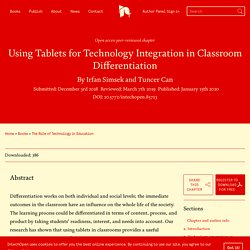
Introduction Today’s modern world caters for a great variety in applications and practices for education. The Complete Guide To Student Digital Portfolios. Digital portfolios can revolutionize the teaching and learning process.
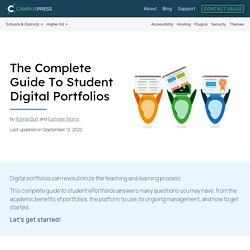
This complete guide to student ePortfolios answers many questions you may have, from the academic benefits of portfolios, the platform to use, to ongoing management, and how to get started. Let’s get started! Modern Learning Strategies: 6 Channels Of 21st Century Learning. Modern Learning Strategies: 6 Channels Of 21st Century Learning by Terry Heick This post has been updated and republished from a 2013 post by Terry Heick Teachers often wrestle with two big questions: How do people learn, and how can they do it better in a constantly evolving context?
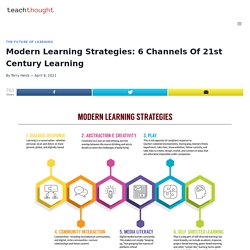
In pursuit, the theme of ’21st-century learning’ often surfaces, a popular label that, while perhaps cliche, still seems to be necessary as we iterate learning models, fold in digital media resources, then add learning algorithms, privacy concerns, and data analytics to an already chaotic event (i.e., learning). Technology tools for teaching beginners online. I’m a huge fan of Quizlet and use it in almost every lesson (here’s how), but recently I’ve been experimenting with a few other authoring tools (ones where you can make your own content) with my 10-12 year old beginners.
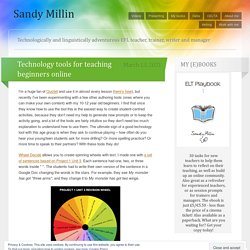
I find that once they know how to use the tool this is the easiest way to create student-centred activities, because they don’t need my help to generate new prompts or to keep the activity going, and a lot of the tools are fairly intuitive so they don’t need too much explanation to understand how to use them. The ultimate sign of a good technology tool with this age group is when they ask to continue playing – how often do you hear your young/teen students ask for more drilling?
Or more spelling practice? Or more time to speak to their partners? With these tools they do! Pub F004 ELT Creativity FINAL v2 WEB. Hybrid Teaching: Lesson Planning / Task Design. Published 19 March 2021 If you’ve read the previous two articles in this series, you must be familiar with the hybrid classroom setup by now.
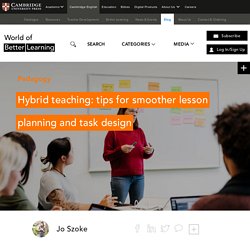
We’re dealing with lessons where the teacher is in a face-to-face classroom with a number of students, while another group of students join the lesson online. We’ve already looked at different types of online teaching and practical tips for the hybrid classroom. Let’s now look at some tips that will help minimise your planning and preparation time for these lessons! What are the 21st-century skills every student needs? The gap between the skills people learn and the skills people need is becoming more obvious, as traditional learning falls short of equipping students with the knowledge they need to thrive, according to the World Economic Forum report New Vision for Education: Fostering Social and Emotional Learning Through Technology.
Today's job candidates must be able to collaborate, communicate and solve problems – skills developed mainly through social and emotional learning (SEL). Combined with traditional skills, this social and emotional proficiency will equip students to succeed in the evolving digital economy. What skills will be needed most? How to prepare kids for jobs that don’t exist yet. Soon, all of these jobs may feel antiquated. The age of automation is upon us, and its reach is gradually extending from routine physical tasks to more advanced ones. If you think this just applies to factory workers, take a look at this recent article in The Guardian. It was written entirely by AI. But don’t panic. As well as threatening jobs, this trend could also create millions more, and transform millions of others.